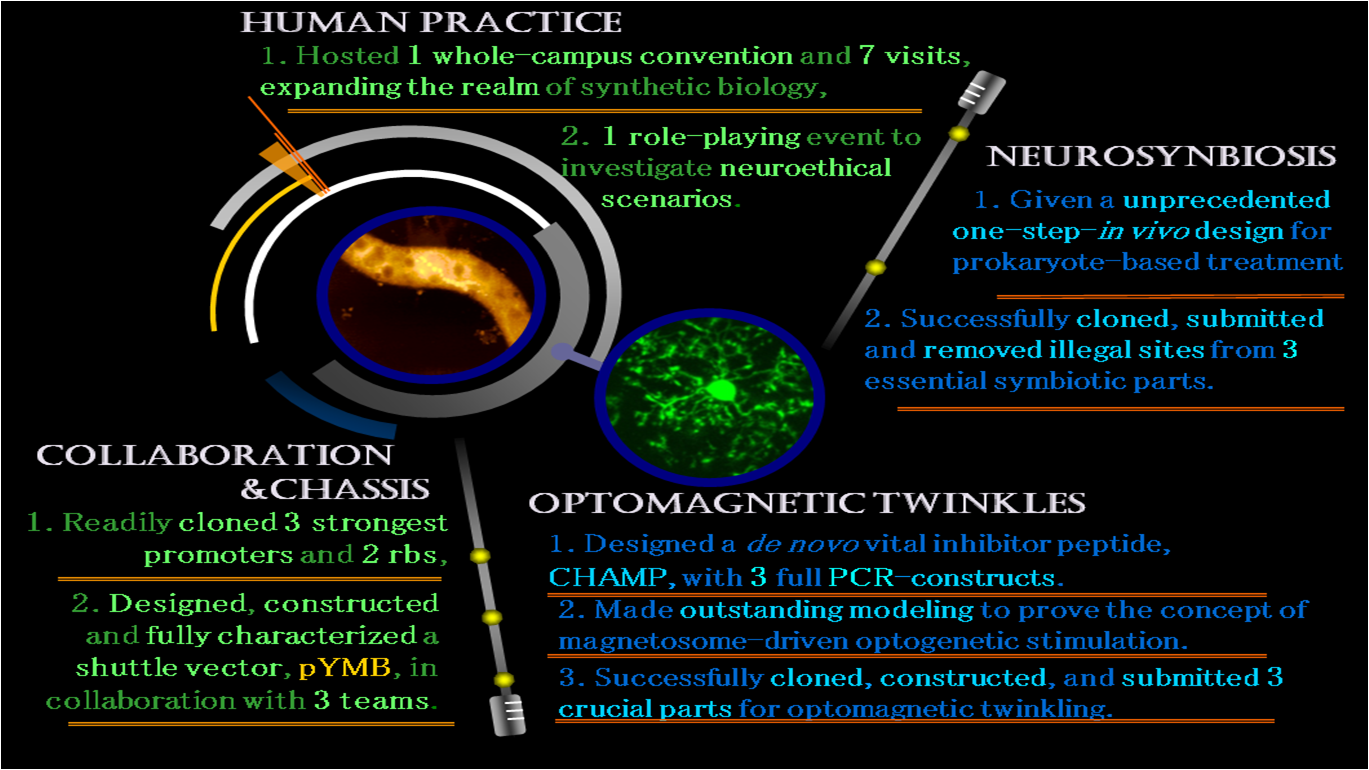Team:NYMU-Taipei
From 2011.igem.org
| Line 7: | Line 7: | ||
<font size=5>'''Tailoring Your Avatar'''</font><br> | <font size=5>'''Tailoring Your Avatar'''</font><br> | ||
<br> | <br> | ||
| - | <font size=3> | + | *'''<font size=3>Goal</font>'''<br> |
| - | Optogenetics, the latest neuroscientific method, has improved specificity for stimulating certain cell types of neurons, reversible bi-directional stimulation, and elevated spatiotemporal precision. However, to achieve neuronal network stimulation, light cables are still needed, leaving long-standing annoying issues regarding immune responses unresolved | + | <font size=2>creates wireless neuro-stimulator, focusing on achieving remote neuro-stimulation to minimize the invasion and damage to the neuron</font> |
| + | |||
| + | *'''<font size=3>Why do we want to do that?</font><br> | ||
| + | <font size=2>Optogenetics, the latest neuroscientific method, has improved specificity for stimulating certain cell types of neurons, reversible bi-directional stimulation, and elevated spatiotemporal precision. However, to achieve neuronal network stimulation, light cables are still needed, leaving long-standing annoying issues regarding immune responses unresolved. </font> | ||
| + | |||
------------------------------------------------------------- | ------------------------------------------------------------- | ||
| style="vertical-align:top;" | | | style="vertical-align:top;" | | ||
Revision as of 12:10, 5 October 2011

|
Tailoring Your Avatar
creates wireless neuro-stimulator, focusing on achieving remote neuro-stimulation to minimize the invasion and damage to the neuron
Optogenetics, the latest neuroscientific method, has improved specificity for stimulating certain cell types of neurons, reversible bi-directional stimulation, and elevated spatiotemporal precision. However, to achieve neuronal network stimulation, light cables are still needed, leaving long-standing annoying issues regarding immune responses unresolved. |
To achieve this goal, we use a species of magnetic bacteria, Magnetospirillum magneticum AMB-1. We have chosen mms13, a transmembrane protein as our target for protein design in this bacterium, as it serves as a linker between reception of wireless magnetic field and optogenetic neuro-stimulation output. Regarding the neuroimmune response, we choose three genes to achieve symbiosis within glial cell: MinC, a division inhibitor, INV, a gene for invasion and LLO, a gene for facilitated escape from phagosomes.

|
 "
"









